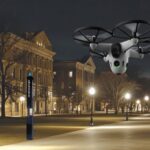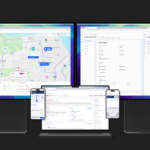Note: The views expressed by guest bloggers and contributors are those of the authors and do not necessarily represent the views of, and should not be attributed to, Campus Safety.
The school bus is a critical, often overlooked component of school safety protocols. Driver training and evacuation drills—not transportation operations—are considered part of the safety profile of school districts. As districts nationwide grapple with bus driver shortages, maintenance backlogs, and other resourcing difficulties, it’s no longer a given that buses will show up on time—or at all.
At a minimum, when routes aren’t covered, students and families experience limited disruption. But at a maximum, disruptions can cascade into real safety issues.
School administrators are anticipating a heightened national focus on student safety at K-12 campuses this fall. Securing the full campus perimeter means securing the outermost perimeter: the school bus. Now is the time for school transportation departments to get ahead of the knowns of school bus safety: maintenance needs, route design and development, and implementation of intuitive driver tools for the safety of students at pickup, drop-off, and everywhere in between.
Avoid Costly Breakdowns Before They Happen
The first and most critical requirement is to ensure that buses are safe to operate. During an average school year, around 10 billion total student trips are made nationally. Each bus can serve 70 students, transporting them from home to campus, field trips, games, and more. The risks associated with running a full-scale school bus fleet will always be high by virtue of the number of touchpoints in a day.
With so many trips on the line, curbing routing difficulties starts with ensuring a district’s buses are fully operational. This is the ground floor of preparedness– districts must create a process to shore up safe operations. Paperless pre- and post-trip inspection systems are a first line of defense to streamline processes, maintain compliance, and ensure students aren’t stranded at pickup for avoidable mechanical issues.
Once districts capture the status of each unit, leaders and managers should consider how they can avoid future maintenance issues. This includes preventative maintenance scheduling and identifying needed repairs before they lead to catastrophic breakdowns. Equipping fleets with technology capable of predicting maintenance issues at a granular level can minimize disruption and mitigate the risk of mid-route malfunctions.
Optimize How You Adjust for On-the-Fly Changes
From the moment bus engines are fired up in the morning, the expectation is operations will change regularly and in unexpected ways. The volume and variance of changes are what introduce risk to school bus operations. As a consequence, the nature of the game is adaptability. A single bus taken out of use, without a backup, can have reverberations on routing for the rest of a fleet.
K-12 campuses need seamless communication with drivers to inform the quickest, most efficient plans the day-of — all variables considered.
The core safety requirement of routing is ensuring drivers know where they are going and when to arrive. Whereas veteran drivers are familiar with the subtleties of their routes, substitute drivers may feel they need extra support with pickup or drop-off in rural areas, dense metropolitan zones, or unpredictable road conditions.
School buses outfitted with state-of-the-art GPS technology maximize bus utilization, make live locations clear to coordinators at dispatch, and help avoid road hazards as they arise. High-tech cabs outfitted with smart fleet management platforms consolidate all the context drivers need on a single tablet. This eases transitions for out-of-commission buses and makes complex—or brand-new—routes intuitive.
Maximize Peace of Mind Across the Board
There are numerous cases of students deserted at the wrong stop, sometimes miles from home. Some campuses are reducing anxiety, enhancing safety, and increasing operational awareness by integrating new, all-in-one technologies geared to address these scenarios.
Using student RFID swipe technology, for example, buses can transmit automated alerts to guardians’ phones indicating that a child has boarded or exited in designated pickup and drop-off zones. Fleets can then log the date, time, and location of each entrance and exit on each bus, ensuring everyone who belongs on board has made it to their seat and, ultimately, to their destination.
Even with minimal disruption to daily scheduling, parents and guardians want to know what is happening with their students. Parents want real-time school bus information in the event of an emergency. They want transportation schedules and reliable drop-off and pick-up details. Technologies that provide certainty for guardians increase confidence in school transportation programs and significantly reduce calls from concerned parents throughout the day.
Control What You Can and Anticipate the Rest
The yellow school bus can be the initial point of threat to student safety, but it’s also the first line of defense. Vehicle safety, route safety, and effective communications are core to reducing risk and helping districts navigate day-to-day variables with ease. Administrators need to structure a holistic view of their perimeter threats on and off the core campus by factoring in the bus and implementing technology to eliminate known risks.
Tim Ammon is Vice President and GM of Passenger Services at Zonar.













